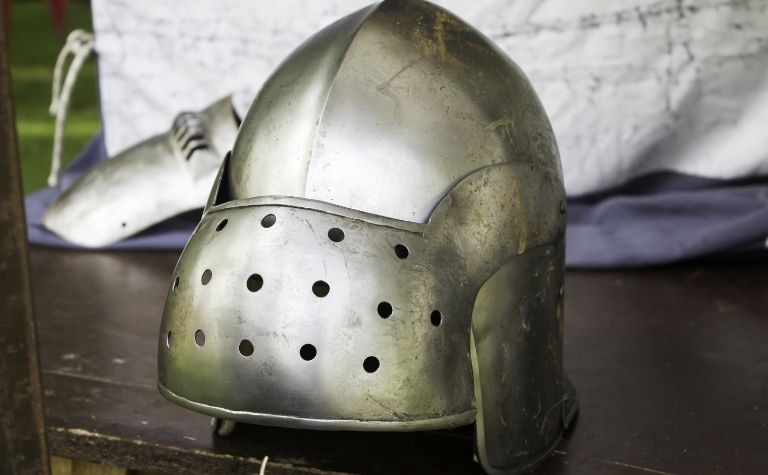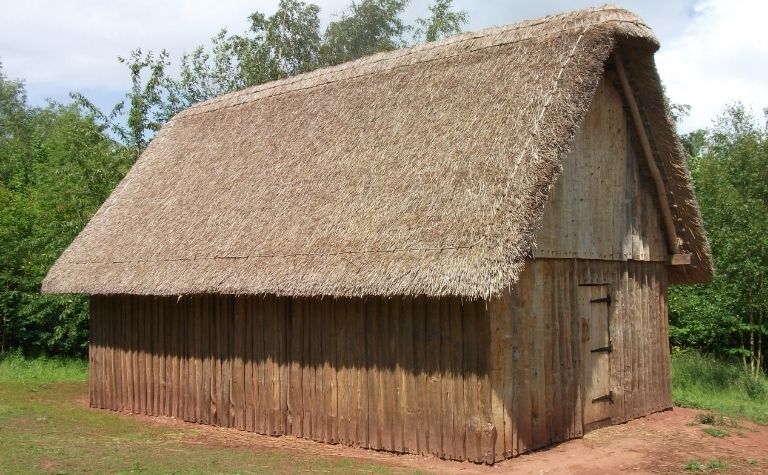Some laypeople often use the words “Vikings” and “Anglo-Saxons” interchangeably.
However, there are significant differences between these two distinct groups of people.
Anglo-Saxons inhabited the area known as the modern-day United Kingdom, whereas Vikings primarily came from the Scandinavian countries.
Additionally, Vikings were pagans. Though Anglo-Saxons also started as pagans, they had converted to Christianity by the Viking age.
This article will talk more about the Anglo-Saxons and Vikings, including where they were from and what they were best known for doing.
It’ll also outline the interactions that occurred between the two groups.
Also see Vikings vs Germanic Barbarians: What’s the Difference? to learn more.

Where Were the Vikings From and What Are They Known For?
Though Vikings, or Norsemen, eventually had settlements in many places, they were originally from the Scandinavian countries of Norway, Denmark, and Sweden.
They were explorers, seafarers, raiders, and pirates. They were also pagans who believed in an extensive pantheon of gods.
The Vikings were known primarily for their raiding and expansion into various areas across Europe, Asia, and even North America.
They were ferocious warriors who didn’t fear death, mainly because of their religious beliefs.
Norse Beliefs
Today, most of the world has relegated Odin and Thor to superhero movies and the pages of comic books.
However, people believed in, worshiped, and sacrificed to them and other deities during the Viking Age.
The Vikings believed that they could curry favor with their gods by their actions on earth.
They also believed their fates were predetermined from the moment they were born and that nothing they could do would change that.
Perhaps most importantly, Vikings thought those who died honorably in battle would go to Valhalla to live with the supreme god Odin.
As a result, they didn’t fear death. Instead, they wanted to die in battle to seal their place in the afterlife.
These beliefs allowed them to fight freely and ferociously, seemingly without fear or reserve.
The most fearsome warriors were berserkers and fought with savagery, unlike anything the Anglo-Saxons had ever seen. [1]
This led to their wild, animalistic reputation.
Furthermore, while the Vikings were incredible land fighters, they were just as deadly on the water.
Sea-based battles were rare, but the Vikings usually had an advantage over the Anglo-Saxons when they did occur.
Also see Why Did the Vikings Die Out? to learn more.
Viking Culture and Civilization
The Vikings’ culture and communities also set them apart from the Anglo-Saxons.
The Vikings put a high premium on cleanliness. They bathed regularly and groomed their hair and fingernails fastidiously.
Ironically, though the Anglo-Saxons called them barbaric and uncivilized, physically, the Vikings were much cleaner than they were.
They also treated their women with more respect and afforded them more authority in the community. [2]
Like Saxon women, Norse women primarily managed households and did domestic work.
However, unlike Saxon women, the Norse women:
- Had some say in who they married
- Could initiate divorce proceedings if they were unhappy in their marriages
- Could own property
- Could reclaim their dowries if their marriages ended
In some cases, women even fought alongside the men and could become influential members of the community.
They were also respected as seeresses and magic-wielders. [3]
Also see Were the Vikings Celtic? to learn more.

Where Were Anglo-Saxons From and What Are They Known For?
The Anglo-Saxons were originally from mainland Europe, likely Germany and southern Scandinavia.
They came from three major groups of people, the Angles, Saxons, and Jutes, and eventually settled in seven distinct kingdoms: Essex, Sussex, Wessex, East and Middle Anglia, Mercia, and Northumbria.
Long before the Anglo-Saxons settled in their seven kingdoms, they, too, held pagan beliefs.
However, by the end of the sixth century, they had converted to Christianity.
When the Vikings began raiding their kingdoms, Christianity had been firmly established as the only religion.
Anglo-Saxon Religious Beliefs
This unshakeable belief in a single god and the holy trinity (the Christian God, his son, Jesus, and the Holy Spirit) led the Anglo-Saxons to label the Vikings as barbaric and uncivilized pagans.
They absolutely hated the Vikings.
That hatred was largely because the Vikings were raiding their lands, slaughtering their people, and demanding tribute to leave.
However, the vast theological differences between them didn’t help matters any.
Anglo-Saxon Culture and Civilization
The Anglo-Saxons were primarily responsible for creating the monarchy system of government for which the United Kingdom is still so famous.
They were also pious people who had very traditional roles for men and women.
Men would work, provide for the family, and make all important decisions. Women managed the households and had limited rights.
Their families chose their husbands for them, and they were expected to be subservient to them.
They did have some rights, however. In fact, Anglo-Saxon women had considerably more rights during this period than they would later on after the Norman Conquest.
They didn’t measure up to the liberties afforded by Norse women, though.
Anglo-Saxons were also great craftsmen, metal workers, and traders. They had organized systems of government, and each kingdom had its own army.
These armies were much more disciplined than the Vikings and fought in more trained and practiced ways.
Also see Why Did the Vikings Invade Paris? to learn more.

What Interactions Did the Vikings and Anglo-Saxons Have?
The Vikings and Anglo-Saxons had many interactions during the Viking Age from 793 AD to 1066 AD.
During this period, the Vikings raided many Anglo-Saxon kingdoms, attacking them mercilessly and even setting up settlements in various Anglo-Saxon-held territories.
The most well-known interaction between Anglo-Saxons and Vikings was when the Vikings raided the monastery of Lindisfarne in 793. (This date is credited as the official “beginning” of the Viking Era.)
However, though this incident is the most famous of the early interactions between Vikings and Anglo-Saxons, it wasn’t the first. That happened in 789.
Three Viking ships came ashore on Essex’s Isle of Portland.
The royal reeve from Dorchester met them, asking them to state their business. Instead, they killed him.
It was another four years before the Vikings attacked Lindisfarne. Unsurprisingly, the monks there were unarmed, and the Vikings devastated the monastery.
Their easy success was likely a strong motivator in their desire to return and continue to raid the Anglo-Saxon kingdoms.
They continued to attack Wessex. They also raided Northumbria and various other kingdoms.
Eventually, they conquered Northumbria and East Anglia, as well as large swaths of Mercia.
King Alfred of Wessex, however, took a different approach.
After requiring the Vikings to convert to Christianity and be baptized, he made an uneasy peace with them.
They settled in Danelaw, and the two groups coexisted, though not always peacefully, until 954, when Danelaw officially ended with the death of Eric Bloodaxe.
Conclusion
The Anglo-Saxons and Vikings were two diverse groups who mostly hated one another. Despite what some people think, the two terms aren’t interchangeable.
Also see Did the Vikings Share Their Wives? to learn more.
